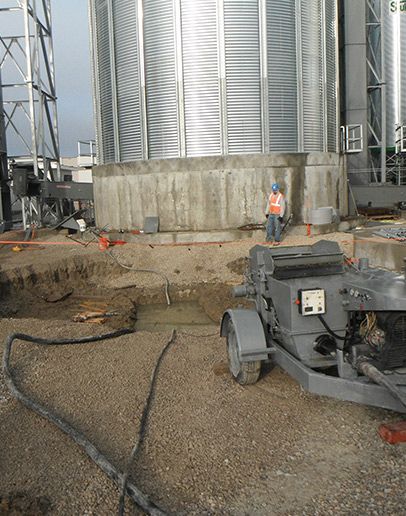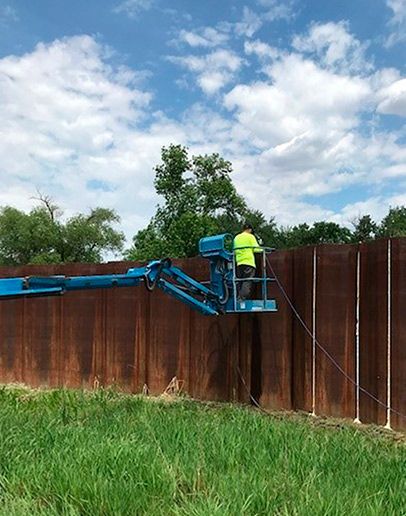Water Cutoff
Pond Water Loss
Grouting inhibits pond, retention basin, and large lagoon water loss through permeable soil layers and utility line bedding backfill.
Pond water loss can occur around storm line outlets in pond perimeters. Water can also migrate via faulty stormline pipe joints and through pipeline bedding materials. The results of pond water loss are:
- Fluctuating water levels
- Lowering of water level
- Shoreline erosion
- Lawn maintenance issues
- Unsightly views
Stabilizing the water level by preventing water loss eliminates the need for expensive erosion control measures. Grouting of the pipeline’s stone bedding beneath flared-end pipe sections and leading joints creates an impregnable bulkhead inhibiting water migration or loss.
Leaching Berms/Dams
Grouting is used to target leaking seams within earthen berms and dams delivering rapid long-term water cutoff results.
Grout cutoff walls are vertically installed in the case of earthen berms and dams to control water seepage. Various products can be selected and installed based on site condition requirements depending upon flow volumes and soil types. Often, soil borings and dye testing are used to develop a grouting program and identify water pathways to be treated.

Excavations
Grouting in advance of excavation can reduce or eliminate the need to de-water and immobilize running soils due to water infiltration when excavating. Grouting also inhibits erosion from beneath adjacent structures and utilities.
When excavations extend below groundwater levels, de-watering wellpoints are used to remove the water; however, in these instances when wellpoints alone are cost prohibitive, insufficient, or ineffective due to soil types, permeation and slurry grouting can fill the high-flow water pathways. Generally, filling the high-flow pathways is sufficient to reduce inflows and de-watering wells can control inflow for continued operations.
Foundation Waterproofing
High-volume groundwater inflow and runoff is easily reduced or eliminated using an array of products best suited for each site condition. In most instances, flooding foundations have common high-flow pathways leading directly from the foundation exterior to the interior. Most are through below-grade soils while others come from a number of other components of infrastructure. Often, the most difficult water infiltration problems are locating the pathways water travels through. Once located, specifically selected products and equipment are used to permanently seal these water pathways.
Below-Grade Structures and Utilities
Interior and exterior grouting procedures are used to eliminate and control groundwater infiltration into most below-grade structures no matter the depth or volume. When attempting to seal below-grade structures and utilities, site conditions must be investigated and properly evaluated. Based on the results of that investigation, a determination is made if the source is to be treated from the interior or the exterior. Equipment and products are selected followed by the implementation of the plan and verification of results.
Cutoff Walls
Cutoff walls are constructed within in-situ soils to inhibit the lateral migration of water or contaminants through permeable soils. These walls may be constructed using excavated trenches filled with an impermeable slurry or in-situ soils to inhibit water migration. Permeation and slurry grouting can be used to treat a single granular seam from only an inch to several feet in thickness. Geological data is used to locate the areas to be treated and define soil types to select the appropriate equipment and products to develop a site-specific corrective program.
Sheet Pile Joint Sealing
Sealing sheet pile joints has many benefits and is often required by municipalities for urban site redevelopment. Frequently, municipalities and developers require that interlocking sheet joints be sealed to inhibit soil loss and water migration between the joints. If allowed to migrate between sheet joints, adjacent soils can decompress causing structures and infrastructure to settle. Shoreline soil retention and contaminant containment are other applications/uses for joint sealing.


